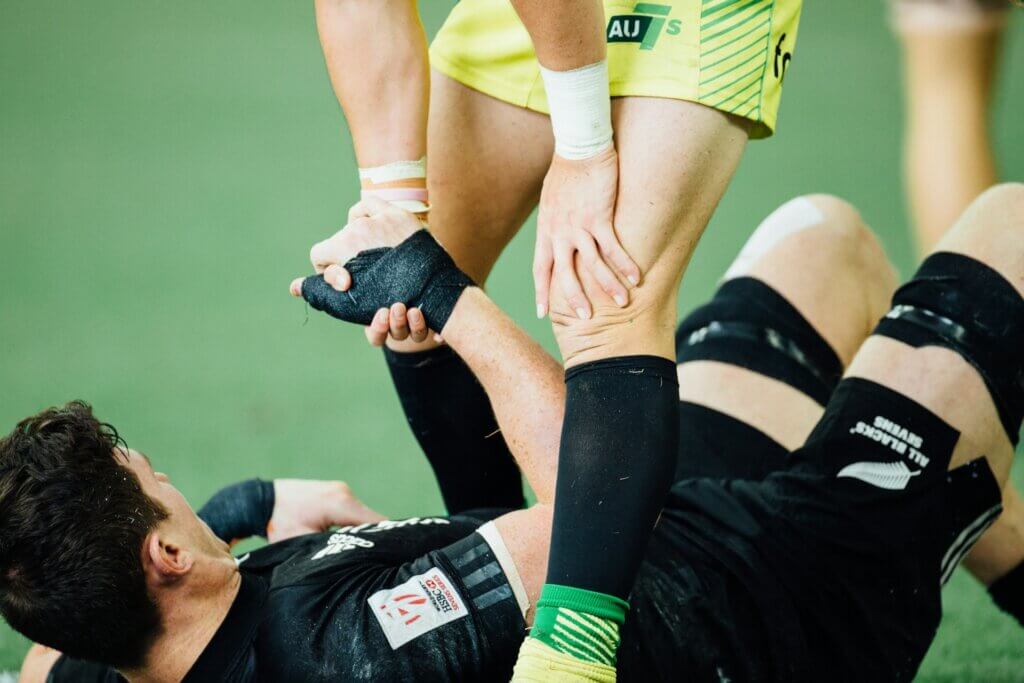Are you an athlete looking to understand how physiotherapy can help you stay at the top of your game? Or perhaps you’re a sports enthusiast curious about how modern technology is revolutionizing the treatment of sports injuries. Physiotherapy, a crucial field in sports medicine, offers not just healing but also a strategic edge for athletes, both amateur and professional.
This comprehensive article dives into the fascinating world of sports physiotherapy, revealing how it helps in injury prevention, recovery, and enhancing athletic performance.
From understanding the basics of sports physiotherapy to examining cutting-edge technological advancements, this article aims to provide a thorough insight into the role of physiotherapy in sports.
Understanding Physiotherapy in Sports
Physiotherapy in sports is an essential field that focuses on the treatment, management, and prevention of injuries related to physical activity and sports. This specialized area of physiotherapy plays a pivotal role in helping athletes of all levels maintain peak physical condition, recover from injuries, and enhance their overall performance.
What is Sports Physiotherapy?
Sports physiotherapy is the specialized branch of physiotherapy that deals with injuries and issues related to sportspeople. It involves techniques and principles specifically designed to help athletes recover from injuries, prevent future injuries, and improve their performance. Sports physiotherapists possess a deep understanding of how the body works and are trained to manage acute, chronic, and overuse injuries.
The Role of a Sports Physiotherapist
A sports physiotherapist is a trained professional who specializes in understanding the demands of different sports and tailors their treatment accordingly. They work closely with athletes to diagnose and treat sports injuries, design injury prevention and maintenance programs, provide rehabilitation and performance enhancement training. Their expertise covers a range of treatments, from hands-on therapy to exercise prescription and the use of advanced technology for injury management.
Preventing Sports Injuries
One of the key roles of sports physiotherapy is injury prevention. This is achieved through the assessment of an athlete’s physical strengths and weaknesses, analysis of their technique, and a thorough understanding of the demands of their specific sport. The physiotherapist then devises a customized training program that focuses on improving strength, flexibility, coordination, and balance, all of which are crucial in minimizing the risk of injury.
Treating Sports Injuries
When injuries do occur, sports physiotherapists are equipped to manage them effectively. They use various techniques such as manual therapy, exercises, and modalities like ultrasound or electrical stimulation to facilitate healing. They also guide athletes through a structured rehabilitation program to ensure a safe and effective return to sport.
Enhancing Athletic Performance
Beyond injury management, sports physiotherapy plays a significant role in enhancing an athlete’s performance. Physiotherapists analyze an athlete’s biomechanics and identify areas for improvement. They then design customized training regimes that focus on specific skills and physical attributes, thus aiding in the enhancement of the athlete’s overall performance in their sport.
Collaboration with Other Professionals
Sports physiotherapists often work in collaboration with other healthcare and sports professionals to provide holistic care to athletes. This team approach ensures that every aspect of the athlete’s health and performance is considered, leading to more effective management of injuries and better performance outcomes.
Injury Prevention and Management
Preventive Measures
Injury prevention is a key aspect of sports physiotherapy. It involves assessing an athlete’s risk of injury, educating them about prevention techniques, and designing exercise programs that improve strength, flexibility, and endurance.
Common Sports Injuries and Their Management
Sports injuries can range from acute traumas like fractures and sprains to overuse injuries such as tendinitis and stress fractures. Physiotherapists employ various techniques like manual therapy, exercise prescription, and advice on proper sports gear to manage these injuries.
Techniques Used in Sports Physiotherapy
Manual Therapy
Manual therapy includes techniques like massage, mobilization, and manipulation. It helps in relieving pain, improving joint mobility, and facilitating recovery.
Exercise Therapy
Exercise therapy is fundamental in sports physiotherapy. It involves tailored exercises to restore strength, flexibility, and endurance. These exercises are crucial for returning an athlete to their sport safely and effectively.
Electrotherapy and Other Modalities
Physiotherapists often use electrotherapy techniques such as ultrasound and TENS (Transcutaneous Electrical Nerve Stimulation) to reduce pain and accelerate healing. Other modalities might include heat therapy, cold therapy, and taping.
Rehabilitation and Return to Sport
Stages of Rehabilitation
Rehabilitation from a sports injury is a phased process. It starts with acute injury management, progresses through various stages of recovery, and ends with the athlete returning to their sport at full capacity.
Criteria for Return to Sport
Deciding when an athlete is ready to return to sport is critical. This decision is based on factors like the complete healing of the injury, recovery of strength and flexibility, and the athlete’s confidence in their ability to perform.
Special Considerations in Different Sports
Sport-Specific Rehabilitation
Different sports pose different risks and require specific rehabilitation strategies. For example, a basketball player’s rehabilitation program will differ significantly from that of a swimmer, due to the distinct nature of the injuries and demands of the sports.
Dealing with Chronic Injuries and Overuse
Chronic and overuse injuries are common in sports like running and cycling. Managing these requires a different approach, focusing on altering training patterns, correcting biomechanical issues, and providing appropriate rest periods.
Technological Advances in Sports Physiotherapy
The field of sports physiotherapy has witnessed remarkable technological advancements in recent years, significantly enhancing the way physiotherapists diagnose, treat, and prevent sports injuries. These technologies not only improve the effectiveness of treatments but also provide deeper insights into athletic performance and injury prevention.
Innovative Technologies in Diagnosis and Treatment
One of the most significant advancements is the use of sophisticated diagnostic tools. High-definition imaging technologies, such as MRI and ultrasound, allow physiotherapists to accurately diagnose injuries and monitor the healing process. Wearable technology, like smartwatches and fitness trackers, offers real-time data on an athlete’s physiological status, helping in monitoring training loads and detecting early signs of overuse injuries.
Rehabilitation Technology
In rehabilitation, virtual reality (VR) and augmented reality (AR) are becoming increasingly popular. These technologies provide immersive environments for safe and controlled therapy sessions, allowing patients to simulate sports activities in a controlled setting. This not only aids in a more effective recovery but also keeps athletes engaged and motivated during their rehabilitation.
Biofeedback is another innovative tool used in sports physiotherapy. It involves using electronic monitoring devices to measure an athlete’s physiological activities like muscle activity, and providing real-time feedback. This helps in improving an athlete’s awareness of their body and in fine-tuning their motor skills for better performance and injury prevention.
Regenerative Medicine
Advancements in regenerative medicine, such as Platelet-Rich Plasma (PRP) therapy and stem cell treatments, are also gaining traction in sports physiotherapy. These treatments involve using the body’s natural healing processes to accelerate recovery from sports injuries, particularly those involving muscles, tendons, and ligaments.
Customization with 3D Printing
3D printing technology is revolutionizing the way custom equipment and supports are made for athletes. From custom-fitted braces and orthotics to protective gear, 3D printing allows for a high degree of customization, ensuring better fit, comfort, and effectiveness in injury prevention and management.
Data Analytics and Machine Learning
The integration of data analytics and machine learning in sports physiotherapy is a game-changer. By analyzing vast amounts of data from various sources, including wearable devices and performance metrics, physiotherapists can predict injury risks and tailor rehabilitation and training programs more effectively for each athlete.
Tele-rehabilitation and Mobile Health Applications
With the advent of tele-rehabilitation and mobile health apps, athletes can now receive guidance and monitor their recovery remotely. This technology is particularly useful for providing continuous care and support, especially when in-person visits are not feasible.
Future Trends and Potential
Looking ahead, the potential for further technological innovations in sports physiotherapy is vast. Developments in artificial intelligence, robotics, and nanotechnology hold the promise of even more personalized and effective treatments, with a focus on optimizing athletic performance and minimizing injury risks.
Finishing Thoughts
Sports physiotherapy is an integral part of the athletic world, significantly impacting athletes’ health, performance, and career longevity. By understanding its principles, techniques, and applications, athletes can not only recover from injuries more effectively but also enhance their overall performance and reduce the risk of future injuries. The field continues to evolve, bringing new and innovative approaches to the forefront, ensuring athletes at all levels receive the best care possible.




